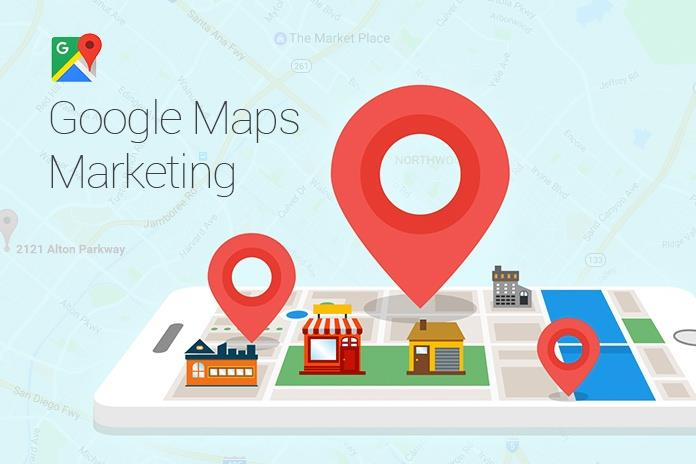TL;DR For Toronto retailers, standing out in busy neighborhoods like Queen Street West, Bloor-Yorkville, or the Distillery District requires more than great products—it demands visibility. Map marketing strategies, particularly through platforms like Google Maps and Apple Maps, help retailers attract local shoppers searching for nearby stores, products, or services.
By optimizing your store’s location presence, retailers can increase foot traffic, drive sales, and outperform competitors.
Key Takeaways:
- Map marketing improves visibility for local searches in Toronto.
- Optimizing Google Business Profile boosts your retail store’s discoverability.
- Local SEO and location-specific content increase map rankings.
- Accurate listings, reviews, and visuals attract more customers.
- Tracking analytics allows Toronto retailers to refine strategies for better results.
Why Map Marketing Matters for Toronto Retailers
Toronto is a competitive retail hub with thousands of shops vying for attention. Most shoppers turn to maps when searching for products near them. According to studies, 76% of local searches on Google result in a store visit within 24 hours.
Map marketing ensures that:
- Your store shows up for “near me” searches.
- Customers get accurate directions and hours.
- Positive reviews increase trust and credibility.
- You capture mobile users searching while on the go.
For expert guidance on optimizing your Toronto retail presence, book a free consultation with www.localbusinessmarketinghelp.com today.
Step 1: Claim and Verify Your Business on Google Maps
Google Maps is the cornerstone of map marketing.
How to claim and verify your listing:
- Visit Google Business Profile Manager.
- Enter your store name and address.
- Select the correct category (e.g., “Clothing Store,” “Electronics Retailer”).
- Verify via mail, phone, or email.
Verification ensures your store appears in search results and on Google Maps for Toronto shoppers.
Step 2: Optimize Your Retail Listing
A complete and accurate listing improves rankings and customer trust.
Key elements to optimize:
- Business Name: Use your official store name.
- Address: Ensure it matches signage and other online directories.
- Phone Number: Use a Toronto area code.
- Hours: Update holiday or special hours.
- Website: Link directly to your store’s website or product pages.
- Services or Products: Add detailed descriptions of offerings.
Consistency across all listings strengthens your credibility with Google.
Step 3: Add Photos and Videos
Visual content significantly boosts engagement.
Tips for Toronto retailers:
- Include images of your storefront, products, and interior layout.
- Add short videos showing product demos or store tours.
- Update visuals regularly to show activity and freshness.
Stores with high-quality visuals receive more clicks, direction requests, and foot traffic.
Step 4: Collect and Respond to Reviews
Customer reviews impact both rankings and shopper decisions.
Review strategy:
- Encourage happy customers to leave reviews via email, QR codes, or receipts.
- Respond promptly to positive and negative feedback.
- Highlight your commitment to customer satisfaction.
Positive reviews increase credibility and influence Toronto shoppers searching nearby.

Step 5: Use Local SEO for Map Marketing
Local SEO helps your store rank higher in map results.
Best practices:
- Include Toronto-specific keywords in your business description and website content.
- Create location pages or blog posts highlighting products in Toronto neighborhoods.
- Ensure consistent Name, Address, and Phone (NAP) across directories.
Local SEO signals to Google that your store is relevant for Toronto-specific searches.
Step 6: Promote Seasonal and Local Events
Toronto retail shoppers respond well to seasonal campaigns and community events.
Ideas:
- Update your Google Business Profile with holiday hours and sales.
- Highlight participation in local festivals or pop-up events.
- Create pins or posts showcasing limited-time offers for Toronto customers.
Engaging with the community increases visibility and drives store visits.
Step 7: Monitor Insights and Analytics
Track your listing’s performance to improve results:
- Views and clicks: See how many users view your profile and visit your website.
- Direction requests: Measure the number of users navigating to your store.
- Search queries: Identify what Toronto shoppers are searching for.
- Engagement: Track photos, posts, and review interactions.
Insights help refine strategies and maximize map marketing effectiveness.
Step 8: Explore Apple Maps and Other Platforms
Don’t rely solely on Google Maps. Ensure your Toronto store is listed on:
- Apple Maps
- Bing Places
- Yelp and Foursquare
- Local Toronto directories
Multiple platforms increase discoverability and attract different user segments.
FAQs
1. How long does it take to see results from map marketing?
Visibility improvements can be seen within weeks, but consistent optimization and engagement yield better results over months.
2. Does Google Business Profile help small Toronto retailers?
Yes. It improves local search visibility and drives foot traffic to small stores.
3. How can I encourage customers to leave reviews?
Ask directly, use QR codes, or follow up via email after purchases.
4. Are photos really necessary for map marketing?
Absolutely. Listings with images get significantly more clicks and direction requests.
5. Can I update my store hours for holidays?
Yes. Regularly updating hours keeps customers informed and prevents negative experiences.
6. Should I optimize for Toronto neighborhoods specifically?
Yes. Including neighborhood names increases relevance and search visibility for local shoppers.
7. Can map marketing increase online sales too?
Yes. Users often check your website from maps listings before visiting, boosting both online and offline sales.
8. Is it worth listing my store on Apple Maps?
Yes. Many iPhone users rely on Apple Maps, making it a valuable addition to your visibility strategy.
Conclusion
Map marketing is essential for Toronto retailers looking to attract local customers and increase foot traffic. By optimizing your listings, leveraging local SEO, collecting reviews, and monitoring analytics, your store can stand out in competitive neighborhoods and convert online searches into in-store visits.
Take your Toronto retail business to the next level—book a free consultation today or visit www.localbusinessmarketinghelp.com for expert guidance in map marketing strategies.
